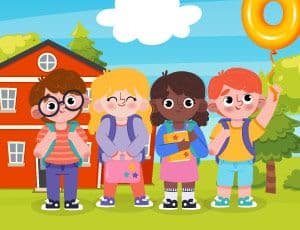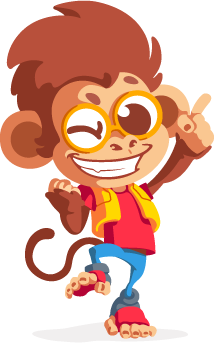Escola Games | Jogos Educativos
https://www.escolagames.com.br
Teacher's support sheet

Popping Ballons
Do you want to learn and have lots of fun?
I have a special invitation for you! Come play the Popping Balloons game and learn about geometric shapes, letters, and numbers. There are many balloons and levels to enjoy!

Teacher's tips
Level of education: Elementary School
Age: 04 to 06 years old
Knowledge of letters and their sounds and the relationship between grapheme and phoneme are fundamental in the literacy and literacy process, enabling children to advance in their hypotheses about reading and writing.
Learner outcomes
Develop reading skills;
Associate letter to its sound;
Differentiate vowel from consonant;
Understand that different words share certain letters;
Learn the basic geometric shapes;
Differentiate the basic geometric shapes;
Differentiate letters from numbers and geometric shapes;
Fix knowledge acquired in the classroom.
Teachers' goals
Provide students with an understanding of the difference between basic geometric shapes.
Provide students with an understanding of the difference between basic geometric shapes, letters and numbers.
Promote playful teaching by making learning more fun and meaningful.
Expand students' knowledge;
Suggestions of approaches for the teacher
Knowledge of letters and their sounds and the relationship between grapheme and phoneme are fundamental in the literacy and literacy process, enabling children to advance in their hypotheses about reading and writing.
Geometric shapes, for example, are everywhere. All objects have a shape.
You could start class by asking the children the following question:
- Do all objects in the world have the same shape?
Next, it is important that the child knows how to relate geometric shapes to these objects and learn to differentiate them. For this you can ask the following questions:
What is the geometric shape of the painting?
What is the geometric shape of the soccer ball?
What is the geometric shape of your notebook?
It is appropriate that you start asking about the geometric shapes of the child's daily life so that he finds meaning and stimulation in what is being taught. Start by asking about the basic shapes first, then work your way up to more complex shapes.
A second activity suggestion is to take the students out of the classroom, walking around the courtyard, the court, the cafeteria, the secretariat, the playground. Ask them to point out the observed geometric shapes. Point out the doors, the soccer ball, the cafeteria benches, and anything else you think is relevant.
The same activity can be done by relating numbers and letters, observed on posters around the school.
More about the content
Geometry is the area of Mathematics that studies shapes. Geometric figures are elements with shapes, sizes and dimensions in the plane or space. Thus, geometric figures can be divided into PLANE and SPATIAL.
FLAT SHAPES are also called two-dimensional because they have two dimensions: length and height. They are classified into POLYGONS AND NON-POLYGONS.
A POLYGON is a plane figure closed by straight lines. In a polygon, these line segments cannot intersect.
In NON-POLYGONS the plane figure has curves, its segments intersect or the figure can be open, without connecting points.
NON-PLANA SHAPES or also called SPACE SHAPES,
unlike flat shapes, they cannot be represented by just one plane, which is why we say that they are THREE-DIMENSIONAL.
Spatial shapes are divided into two large groups, polyhedra and non-polyhedra.
The Polyhedron is a geometric solid that has all plane faces. While non-polyhedrons are solids that have at least one curved surface, for example: the cone, the cylinder and the sphere.
